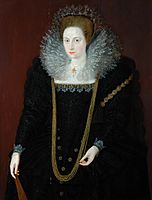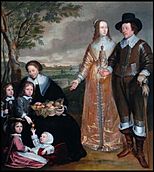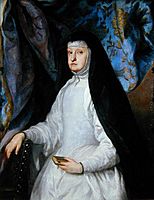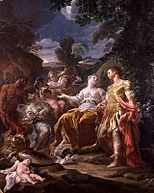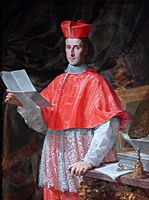Bowes Museum facts for kids
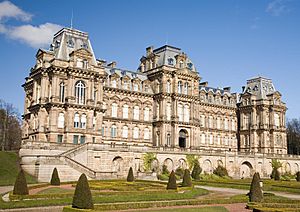
The museum was designed to look like a French château, or castle.
|
|
| Location | Newgate, Barnard Castle, County Durham, DL12 8NP, England |
|---|---|
The Bowes Museum is a famous art gallery located in the town of Barnard Castle, in County Durham, England. It looks like a magnificent French castle and was built to hold the amazing art collection of John Bowes and his wife, Joséphine Benoîte Coffin-Chevallier. The museum opened its doors to the public in 1892.
Inside, you can find incredible paintings by world-famous artists like El Greco, Francisco Goya, and Canaletto. The museum also has beautiful decorative art, such as fine porcelain, ancient textiles and tapestries, and fancy clocks and costumes.
One of the most popular attractions is the Silver Swan. It is a life-sized mechanical swan made of silver in the 1700s. Visitors love to watch as the automaton moves, preens its feathers, and pretends to catch and eat a fish.
Contents
The Story of the Museum
A Couple's Dream
The Bowes Museum was the dream of John Bowes and his wife, Joséphine Benoîte Coffin-Chevallier. John Bowes was the son of a British Earl, but because of old Scottish laws, he could not inherit his father's title. He and his wife, a French actress and artist, shared a deep love for art.
They wanted to create a special place in John's home county of Durham to share their art collection with everyone. They hired two architects, Jules Pellechet from France and John Edward Watson from England, to design the building. Sadly, both John and Joséphine passed away before their museum was finished and opened in 1892.
A French Castle in England
Construction on the museum began in 1869. The building was designed in a grand French style, making it look very different from other buildings in the area. It has large windows, decorative columns, and special roofs called mansard roofs.
Some people loved its unique look. An article from 1901 called its collection "priceless" and "wonderful." However, a famous architectural critic, Nikolaus Pevsner, thought it was "big, bold and incongruous." He felt that a huge French-style building looked out of place in the small English town of Barnard Castle.
When the museum opened, it contained 800 paintings and a total of 15,000 art objects that John and Joséphine had collected from all over Europe.
Treasures of the Museum
Famous Art and Exhibitions
The museum's collection is full of masterpieces. It has hosted special exhibitions featuring famous artists like Monet, Turner, and Toulouse-Lautrec.
In 2005, the museum went through a major update. New galleries were created for Fashion & Textiles and Silver. The main art galleries on the second floor were also refreshed, making the museum an even better place to explore art.

A Lost Painting Found
In 2013, the museum was part of an exciting discovery. Art historian Dr. Bendor Grosvenor was looking at paintings online on the Your Paintings website. He saw a picture of a painting from the Bowes Museum's storeroom that he thought might be special.
The painting, a Portrait of Olivia Porter, was covered in old, dark varnish and dirt. It was thought to be just a copy of a famous work. After it was carefully cleaned and restored, experts confirmed it was a real painting by the great artist Anthony van Dyck. This lost treasure was a fantastic addition to the museum's collection.
- A selection of paintings from the Bowes Museum
-
Attributed to Marcus Gheeraerts the Younger, Portrait of a Lady
-
Corrado Giaquinto, Venus Presenting Arms to Aeneas, 1750


